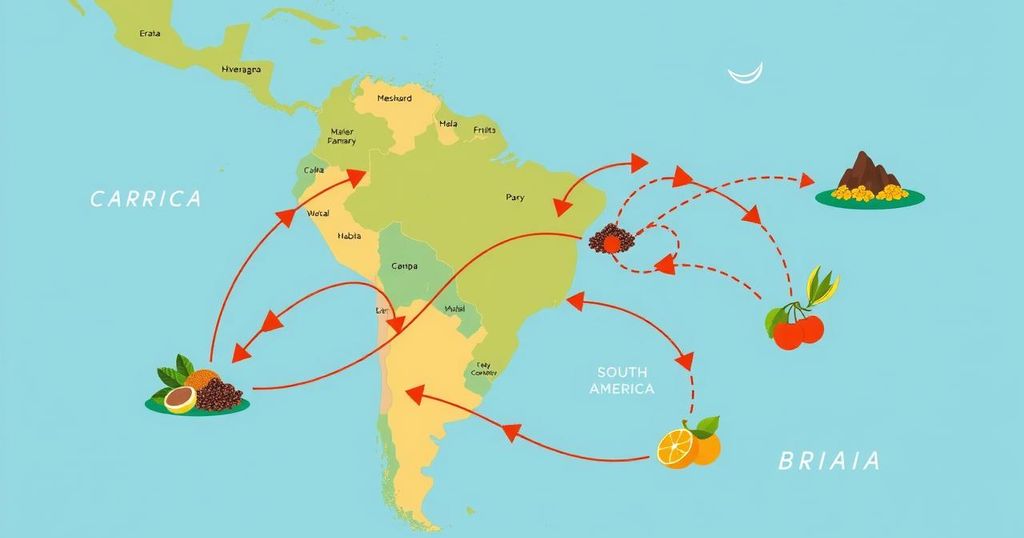Exploring South America: A Solution for Canada’s Trade Diversification?

As American protectionism intensifies, Canada is exploring trade opportunities beyond North America, particularly with Mercosur, the largest trade bloc without a current agreement. Experts express varying opinions on the potential benefits and challenges of such a deal, emphasizing the need for strategic analysis and comparison with existing agreements like CETA.
The increasing American protectionism has compelled Canada to seek trade partners beyond North America, with South America emerging as a potential solution. Specifically, Canada’s negotiations with Mercosur, the largest trade bloc without a current agreement, may offer new trade opportunities, as highlighted by Rambod Behboodi, an international trade lawyer at Borden Ladner Gervais LLP.
Mercosur, founded in 1991 by Argentina, Brazil, Paraguay, and Uruguay, established a common market by removing customs duties and implementing a common external tariff (CET). The CET, currently averaged at 11.5%, governs trade from non-member countries. Venezuela was part of the bloc until its indefinite suspension in 2016, whereas Bolivia joined in 2024.
Official discussions for a Canada-Mercosur free trade agreement commenced in 2018; however, progress has been slow, particularly when compared to the European Union, which achieved its agreement with Mercosur after 25 years of negotiations. Behboodi emphasizes the importance of solidifying such agreements to prevent Canada from lagging behind the EU’s competitive advantages in machine exports to the region.
Last year, Brazilian exports to Canada saw a 9% increase, totaling US$6.31 billion. However, imports from Canada decreased by 18%, exacerbated by Brazil’s economic challenges. The mere growth of 60% in exports over the last decade indicates a strengthening bilateral relationship, according to Hilton Nascimento of the Chamber of Commerce Brazil-Canada.
Evelyne Coulombe, Canada’s ambassador to Germany, has advocated for concluding a trade agreement with Mercosur, positing potential benefits in the oil, gas, renewable energy, and IT sectors through collaborative ventures with Brazil and Europe.
Contrarily, Fen Olser Hampson, a professor at Carleton University, expresses skepticism regarding the viability of a Canada-Mercosur agreement, noting the overlap in export products such as beef and aerospace. Given Canada’s manufacturing sector’s deep ties to the U.S., he argues that expanding trade with Asia and Europe could be more advantageous.
Economists suggest that before pursuing a Mercosur agreement, Canada should analyze the recent EU-Mercosur deal to understand its impact on trade dynamics. The EU-Mercosur agreement, signed in December 2020, eliminates tariffs on over 90% of trade.
Despite the potential for increased trade, concerns persist regarding Canadian firms’ willingness to utilize trade agreements effectively, as evidenced by the low uptake of preferences under the Canada-EU CETA agreement established in 2017. Bernardo Blum warns that a Canada-Mercosur deal may not significantly influence trade outcomes, given the smaller scale of Mercosur compared to the EU.
In conclusion, while South America, specifically Mercosur, presents a promising avenue for Canada’s trade diversification amidst rising American protectionism, uncertainties and competing priorities remain. Experts highlight the need for careful consideration of potential benefits and challenges in establishing a free trade agreement. A balanced approach toward trade agreements with South America, Asia, and Europe is essential for optimizing Canada’s global trade strategy.
Original Source: financialpost.com








